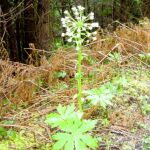| Drug Interactions: |
| Taking colt's foot with these drugs may cause or increase liver damage: |
| Abacavir, (Ziagen) |
Acarbose, (Prandase, Precose) |
Acetaminophen, (Genepap, Tylenol) |
Allopurinol, (Aloprim, Zyloprim) |
Atovastatin, (Lipitor) |
| Celecoxib, (Celebrex) |
Cidofovir, (Vistide) |
Cyclosporine, (Neoral, Sandimmune) |
Docetaxel, (Taxotere) |
Dofetilide, (Tikosyn) |
| Erythromycin, (Erythocin, Staticin) |
Etodolac, (Lodine, Utradol) |
Fluconazole, (Apo-Fluconazole, Diflucan) |
Fluphenazine, (Modecate, Prolixin) |
Fluvastatin, (Lexcol) |
| Foscarnet, (Foscavir) |
Ganciclovir, (Cytovene, Vitrasert) |
Gemfibrozil, (Apo-Gemfibrozil, Lopid) |
Gentamicin, (Alcomicin, Gentacidin) |
Ibuprofen, (Advil, Motrin) |
| Indinavir, (Crixivan) |
Isoniazid, (Isotamine, Nydrazid) |
Ketoconazole, (Apo-Ketoconazole, Nizoral) |
Ketoprofen, (Orudis, Rhodis) |
Ketorolac, (Acular, Toradol) |
| Lamivudine, (Epivir, Heptovir) |
Levodopa-Carbidopa, (Nu-Levocard, Sinemet) |
Lovastatin, (Altocor, Mevacor) |
Meloxicam, (MOBIC, Mobicox) |
Methotrexate, (Rheumatrex, Trexall) |
| Methyldopa, (Apo-Methyldopa, Nu-Medopa) |
Morphine Hydrochloride, (Morphine Hydrochloride) |
Morphine Sulfate, (Kadian, MS Contin) |
Naproxen, (Aleve, Naprosyn) |
Nelfinavir, (Viracept) |
| Nevirapine, (Viramune) |
Nitrofurantoin, (Furadantine, Macrobid) |
Ondansetron, (Zofran) |
Paclitaxel, (Onxol, Taxol) |
Pantoprazole, (Pantoloc, Protonix) |
| Phenytoin, (Dilantin, Phenytek) |
Pioglitazone, (Actos) |
Piroxicam, (Feldene, Nu-Pirox) |
Pravastatin, (Novo-Pravastatin, Pravachol) |
Prochlorperazine, (Compazine, Compro) |
| Propoxyphene, (Darvon, Darvon-N) |
Repaglinide, (GlucoNorm, Prandin) |
Rifampin, (Rifadin, Rimactane) |
Rifapentine, (Priftin) |
Ritonavir, (Norvir) |
| Rofecoxib, (Vioxx) |
Rosiglitazone, (Avandia) |
Sanquinavir, (Fortovase, Invirase) |
Simvastatin, (Apo-Simvastatin, Zocor) |
Stavudine, (Zerit) |
| Tamoxifen, (Nolvadex, Tamofen) |
Tramadol, (Ultram) |
Zidovudine, (Novo-AZT, Retrovir) |
|

